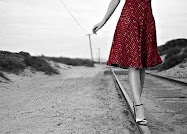WASHINGTON (CNN) -- Sen. Barack Obama's 30-minute TV ad, which ran simultaneously on broadcast and cable networks at 8 p.m. ET Wednesday, is muscle-flexing that has little precedent, a campaign advertising expert said.

Sen. Barack Obama aired a 30-minute campaign ad Wednesday night."It's evidence, if you needed any, that the Obama campaign has more money than there is ad time left to buy," said Evan Tracey, director of the Campaign Media Analysis Group. "This is flexing the muscles."
Tracey estimates that it will cost the campaign "in the $4 to 5 million range -- at a minimum, $3.5 million."
But, he said, spending the money is a "no-brainer" for the Democratic presidential hopeful.
"The strategic brilliance of this for Obama is that he is going to consume about 24 hours of the news cycle," Tracey said. "It boxes [John] McCain in, takes the oxygen out of the room."
In the carefully produced infomercial, Obama laid out his plans for the economy and for bringing an end to the war in Iraq.
It also featured stories of struggling families in swing states such as Ohio and Missouri and included testimonials from high-profile supporters, including Kansas Gov. Kathleen Sebelius and New Mexico Gov. Bill Richardson.
Obama's Republican opponent, Arizona Sen. John McCain, was not mentioned, nor was the GOP. The spot ended with a brief, live Obama address to a rally in Florida, another hotly contested state in this year's campaign.
"I'm reminded every single day that I am not a perfect man," he said. "I will not be a perfect president.
"But I can promise you this: I will always tell you what I think and where I stand. I will always be honest with you about the challenges we face. I will listen to you when we disagree. And, most importantly, I will open the doors of government and ask you to be involved in your own democracy again."
There was so much buzz surrounding the infomercial -- which was announced about two weeks ago -- that on Tuesday, Time magazine's Mark Halperin put the ad's two editors on his daily list of the "five most important people in American politics not running for president."
Those editors, Erik Smith and Mark Putnam, were "still in an edit room" cutting the 30-minute piece Tuesday when he published the list, according to Halperin, Time's editor-at-large and senior political analyst.
The ad ran at 8 p.m. ET on CBS, NBC, MSNBC, Fox, BET, TV One and Univision, the Spanish-language network, six days before Election Day.CNN declined to run the spot, and talks between ABC and the Obama
campaign fell apart.
"We were approached by the Obama campaign and declined their request," said Sal Petruzzi, senior vice president for public relations of Turner Broadcasting, CNN's parent company.
"We did not want to pre-empt our programming lineup with a 30-minute spot. We would rather use our air to continue to cover the campaign, candidates and issues like we always do, from all points of view with the best political team on television."
An ABC spokeswoman declined to comment about the network's talks with the Obama campaign.
"As a matter of policy we don't comment about clients with whom we are doing business," said Julie Hoover of ABC. The Obama campaign has bought advertising on ABC in the past, she said, "but they did not buy the half-hour."
Obama taped an interview Wednesday with ABC's Charles Gibson, which is to run Thursday, his campaign said.
A source familiar with ABC policy suggested the network had offered the Obama campaign a different time slot.
"Hypothetically, we would have offered them equivalent time," the source said. "We don't have to give them the exact slot they are asking for."
Obama campaign spokesman Bill Burton said ABC had ultimately offered Obama the slot he wanted, but the campaign turned it down.
"By the time they agreed, we had already committed our resources," Burton said.
The Obama campaign reported last week that it had raised a record-shattering $150 million in September.
Obama has outspent McCain by a huge margin, according to CNN's consultant on ad spending.
Between the time the two candidates clinched their party's nominations in the spring and October 25, Obama spent more than $205 million on TV ads. McCain spent more than $119 million, according to TNS Media Intelligence/Campaign Media Analysis Group.
The McCain campaign launched an ad Wednesday attacking Obama for his 30-minute special.
"Behind the fancy speeches, grand promises and TV special lies the truth: With crises at home and abroad, Barack Obama lacks the experience America needs," the ad said.
The timing of Obama's informercial pushed back the start of a World Series game, provoking a jab from McCain during a Wednesday afternoon appearance in Florida.
"It used to be that only rain or some other act of God could delay the World Series," he said. "But I guess network executives figured an Obama infomercial was close enough."
The Obama campaign did not ask that the game be delayed, said a spokesman for Fox, which broadcasts the World Series.
"They asked Fox to buy the air time," the spokesman said. "Fox went to our partner, Major League Baseball, and asked if it would be OK to delay the game to take this important political advertisement. They agreed.
MLB's willingness to delay the fall classic for a political ad shows how very unusual the Obama TV spot is.
"Ross Perot did it in 1992, but it wasn't this close to Election Day, and now you have a very different media consumption environment. You didn't have the cable then," Tracey said. "There is no precedent for this sort of an ad this late in the race."






























